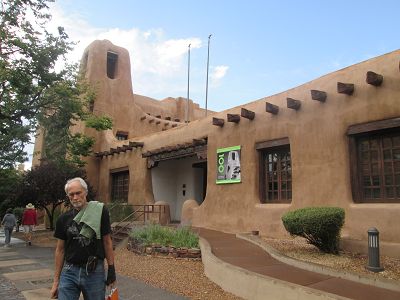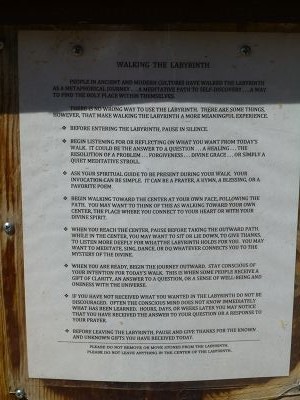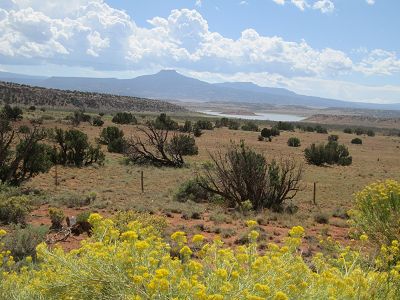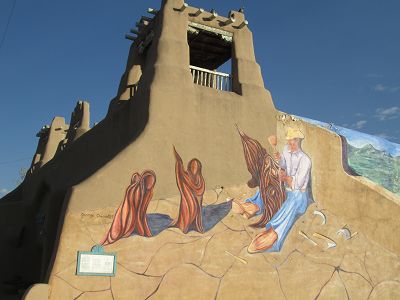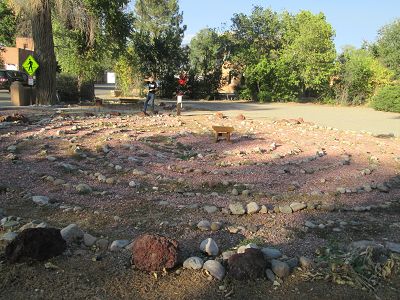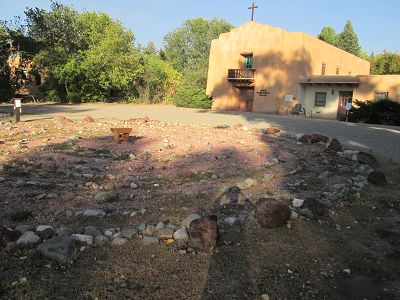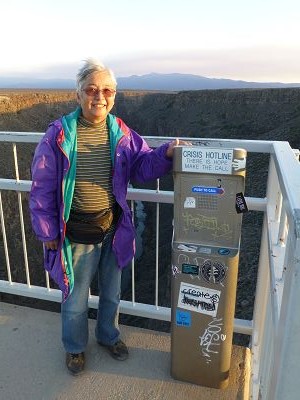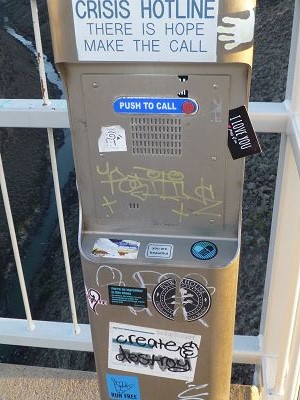|
Santa Fe, Taos and the call of the "Great Southwest"
(This postcard dates from 191_.) | ||
| Arrive Sante Fe | Ghost Ranch | Taos Streetscapes |
| The Harvey House Revelation | Ghost Ranch Labyrinth | Taos Labyrinth |
| Mary Jane Colter | Ghost Ranch Vicinity | Mexican craft wares, north of Taos |
| Abiqui | Taos | Rio Grande Gorge |
|
Santa Fe and nearby places were a main theme of this trip of course. For Noriko, the places of Georgia Okeefe were a much interest. But we were to discover more. The state history museum in Santa Fe was an education. The revelation of the trip for me was "Harvey Hotels" and their consequence. If I had time to write a book I would show that the Harvey Hotels and the culture it fostered invented the "Southwest" as we presume it. Without doubt the Harvey Hotels made the Southwest comfortably accessible to ordinary Americans with curiosity and a little savings. These included single, unaccampanied women. The Harvey Hotels were staffed by a large population of single young provincial women who had been induced to leave their fathers' households and farms. These young women were thus awakened to a much wider world. (According to "my book") this welcome to women tinted the culture of the region, contributing to its uniqueness. Witness Georgia O'Keefe's decision to locate there. She is but the most renowned of a large number. Misc notes from museum: Dorthea Lange; Russel Lee; Walker Evans. | ||
|
Arrive Sante Fe
| ||
|
When the westward expansion of the United States began, customers traveling by railroad had few options for meals along the way. Their only options were usually rancid meat, cold beans, and stale coffee. Fred Harvey, then working as a freight agent for the Chicago, Burlington and Quincy Railroad, had a vision of high quality, large portioned meals served by lovely young uniformed ladies along the rail lines. In 1878, a handshake agreement with the Atchison, Topeka and Santa Fe Railway contracted Harvey to build 3 eating houses along the line on an experimental basis. Those 3 restaurants quickly expanded to hotels, dining cars, and gift shops
| ||
|
Hired by Fred Harvey to design interiors for his restaurants, Mary Jane Coulter traced a career in architcture and design which is almost unparalleled. She designed most of the iconic National Park Lodges of the Southwest, including those at Grand Canyon, which embody "Southwest Style" in the popular mind. Colter largely invented the iconic "Southwest Style," designing not only interiors but buildings, textiles, furniture and all items which dress an interior. It is evident she noticed and loved the indigeneous forms she saw. Note the hogan-inspired ceiling of Desert Watchtower, etc. The high intellect architecture schools despise "Colterism" buf Americans are bound to consume it by every means possible and never tire of it. The evidence is the exhibit in the history museum. Google "Mary Jane Colter" to learn for yourself.
| ||
|
Abiqui
A famous place on account of Georgia Okeefe. Her house is here. But one must make reservation months in advance to see it. Because most people are like us and unaware of this, there is a shiny modern visitor's center containing books, helpful staff, and an info film. "I find people very difficult" (in an interview late in her life.) | ||
|
Ghost Ranch. Its history is as interesting as the place. For example, it was probably one of several ingredients attracting the locating nearby of Las Alamos and the Manhattan Project.
Misc notes from the museum: Exhibit "Ladies of the Canyon"; Bob Ross; NPR | ||
|
Ghost Ranch Labyrinth
concentric offset: about 1'3" "This is like life. You think are going one way and then you change directions." | ||
|
Ghost Ranch Roadside Vicinity
| ||
|
Taos
The Taos Pueblo, the main attraction of Taos, was closed to visitors on the day we arrived. The people were preparing for a festival. | ||
|
Taos Streetscapes
| ||
|
Taos Labyrinth We have not yet learned why all these labyrinths occur in the Taos-Ghost Ranch vicinity.
| ||
|
We wanted to buy several of these Mexican tincraft wonders but had no way to bring them home.
| ||
|
Bridge over the Rio Grande Gorge
| ||

